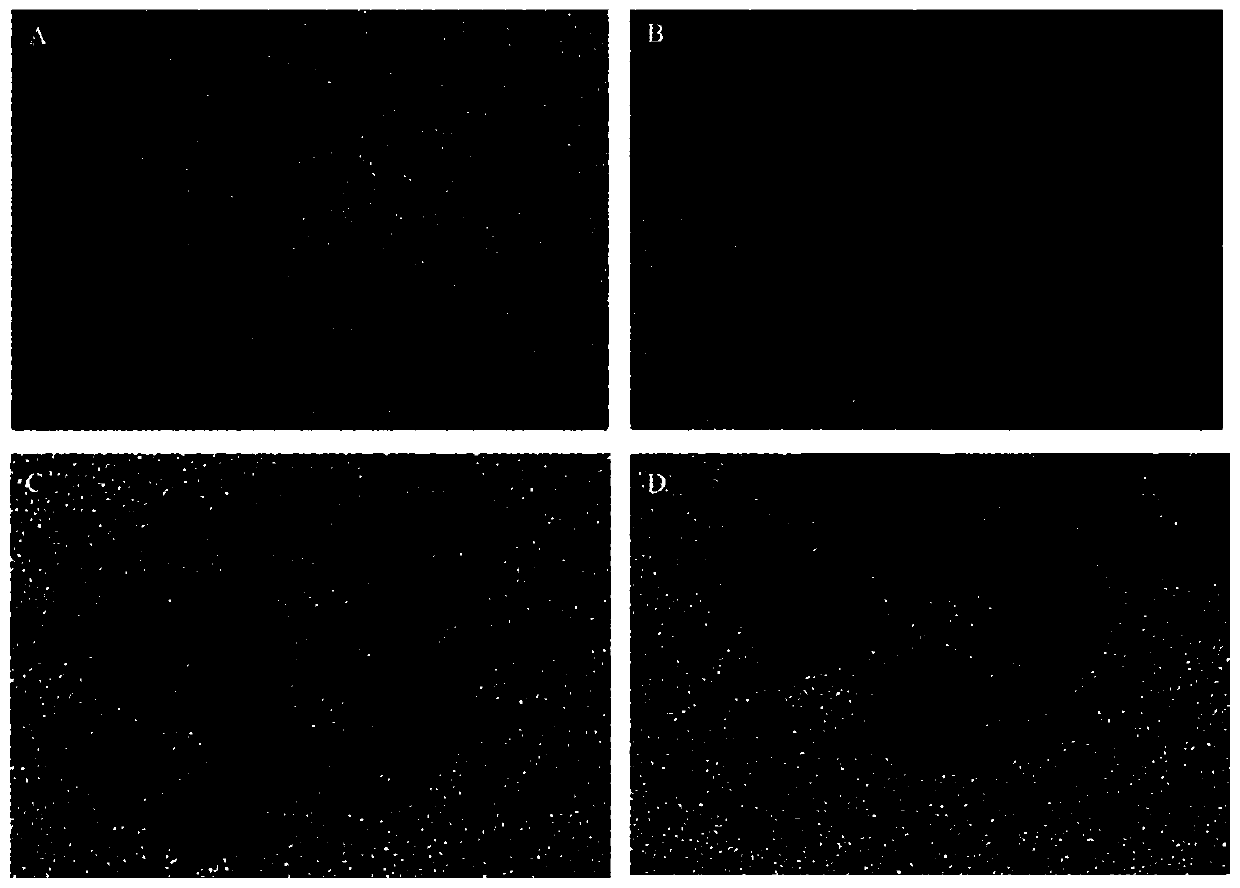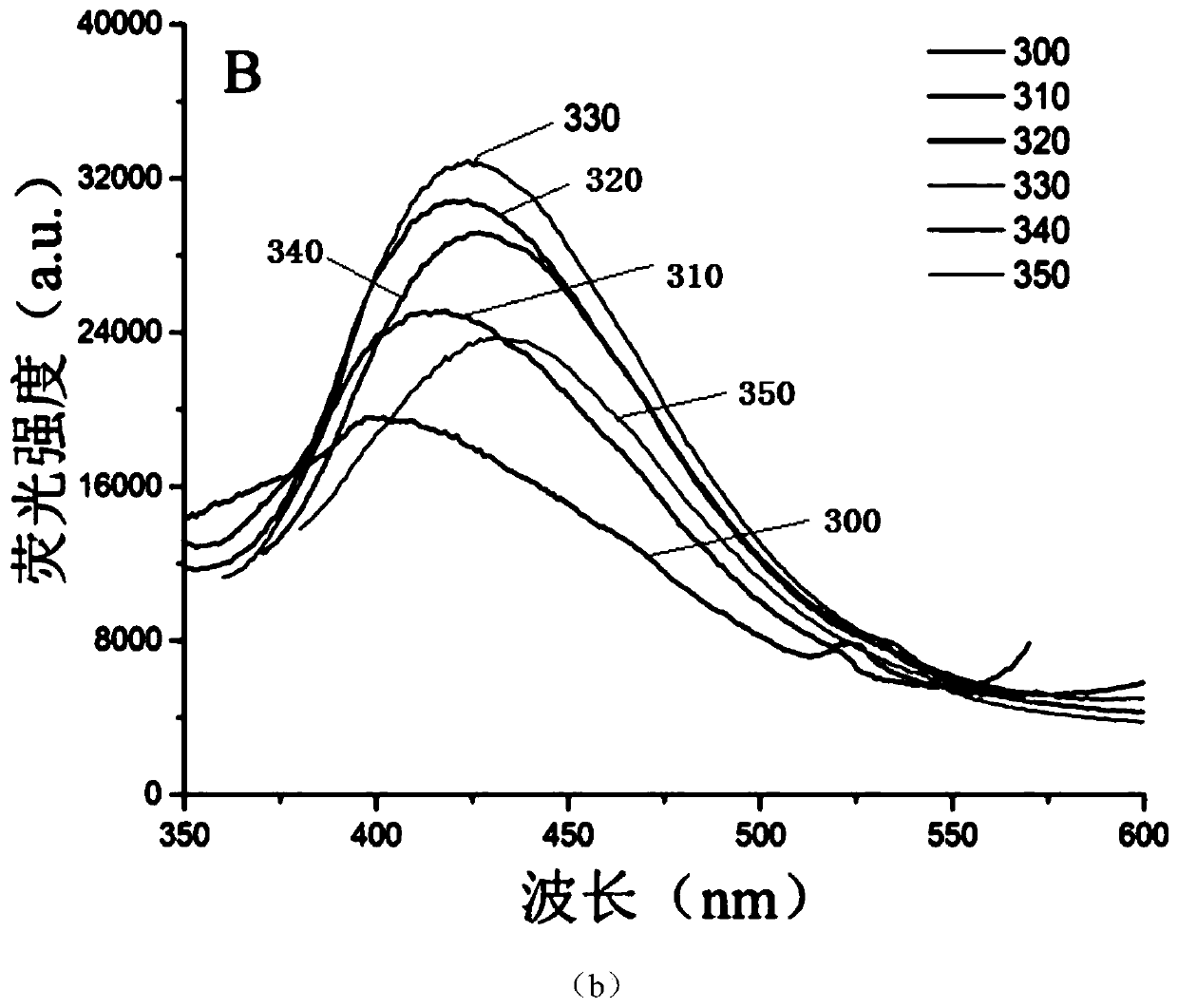Carbon quantum dot-molecular imprinting fluorescence sensor material for detecting chloramphenicol and preparation method and application thereof
A fluorescent sensor, carbon quantum dot technology, applied in the fields of analyzing materials, chemical instruments and methods, and material analysis by optical means, can solve the problems of CdTe quantum dot toxicity, heavy metal ion leakage, slow response speed, etc., and achieve excellent water quality. - Dispersibility and stability, sensitive detection, low cost effect
- Summary
- Abstract
- Description
- Claims
- Application Information
AI Technical Summary
Problems solved by technology
Method used
Image
Examples
Embodiment 1
[0031] Example 1 Preparation of carbon quantum dot-molecularly imprinted fluorescent sensor
[0032] 1. Preparation of nitrogen-doped carbon quantum dots
[0033] Add 12mmol urea and 4mmol citric acid into 20mL of water, ultrasonically dissolve it, seal it into a 50mL reaction kettle, and heat at 160°C for 4h. After cooling, add an appropriate amount of acetone to break the emulsification, centrifuge at 5000r / min for 5min, and vacuum dry the precipitate to obtain solid carbon quantum dots.
[0034] 2. Synthesis of Molecularly Imprinted Fluorescent Sensor Based on Carbon Quantum Dots
[0035] Add 7.50 mL of cyclohexane, 1.80 mL of n-hexanol and 1.77 mL of Triton X-100 into a 100 mL Erlenmeyer flask with a stopper, and stir magnetically for 20 min at a speed of 800 r / min. Add 1 mL of 1 mg / mL carbon quantum dot solution and stir for 20 min. Add 0.80 mmol tetraethoxysilane and 60 μL ammonia water and stir for 2 h. A prepolymerization solution consisting of 0.20 mmol of 3-amino...
Embodiment 2
[0038] Example 2 Characterization and Performance Evaluation of Carbon Quantum Dot-Molecularly Imprinted Fluorescent Sensor
[0039] Such as figure 1 As shown, A and B are transmission electron micrographs of carbon quantum dots, and C and D are transmission electron micrographs of carbon quantum dots-molecularly imprinted fluorescent sensors. From figure 1 In A, it can be seen that the size of carbon quantum dots is about 2-5nm and has a lattice structure. sensor material ( figure 1 C) in C) has a larger size of about 10nm, which is because the molecular imprinted layer is wrapped on the surface of the carbon quantum dots. and in figure 1 In D, it can be seen that there is a group of darker color in the sensor microsphere, which is the wrapped carbon quantum dot. exist figure 1 B in can see the aggregation state of carbon quantum dots, and figure 1 The sensor material of C in C shows better dispersion. This is because the strong van der Waals force between the surface...
Embodiment 3
[0042] Example 3 Application of carbon quantum dot-molecularly imprinted fluorescent sensor in the detection of chloramphenicol
PUM
| Property | Measurement | Unit |
|---|---|---|
| Particle size | aaaaa | aaaaa |
| Particle size | aaaaa | aaaaa |
| Size | aaaaa | aaaaa |
Abstract
Description
Claims
Application Information
 Login to view more
Login to view more - R&D Engineer
- R&D Manager
- IP Professional
- Industry Leading Data Capabilities
- Powerful AI technology
- Patent DNA Extraction
Browse by: Latest US Patents, China's latest patents, Technical Efficacy Thesaurus, Application Domain, Technology Topic.
© 2024 PatSnap. All rights reserved.Legal|Privacy policy|Modern Slavery Act Transparency Statement|Sitemap



